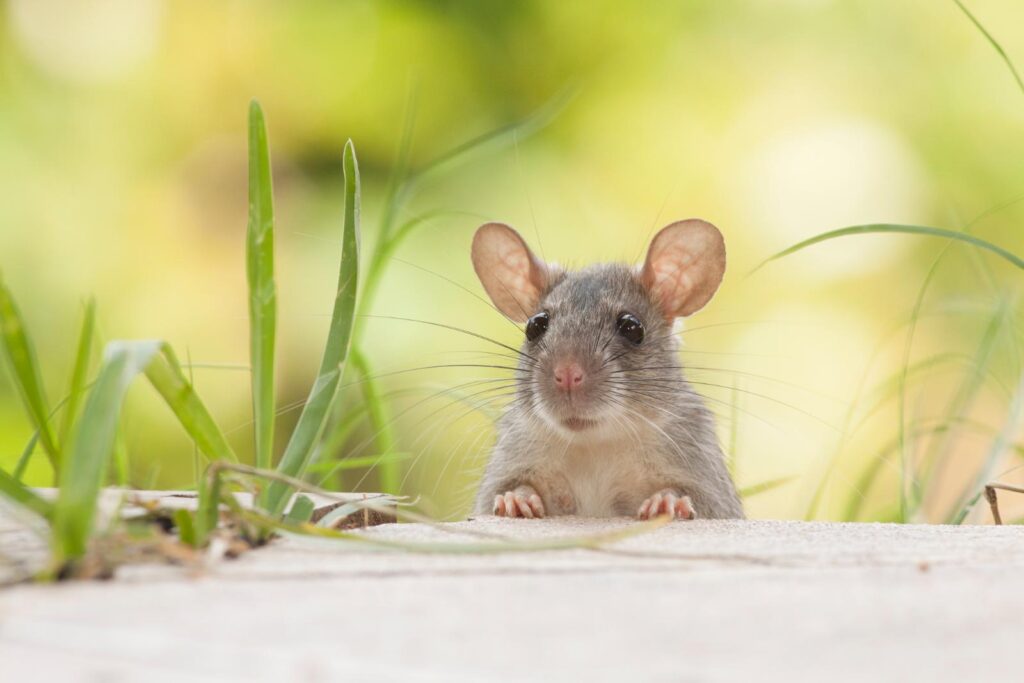
Contents
Keeping mice out of apartments is more than just wishful thinking. By understanding their behavior and identifying common entry points, you can create an environment that discourages these pests. Regular cleaning and sealing gaps are essential steps, but there’s more to reflect upon. What about natural repellents or traps? As you explore these strategies, you may find that some methods are more effective than others, prompting you to rethink your approach to pest control.
Key Takeaways
- Seal gaps around doors and walls with door sweeps and caulk to prevent mice entry.
- Store food in airtight containers and clean surfaces regularly to eliminate food sources.
- Maintain cleanliness by regularly sweeping and decluttering to reduce hiding spots.
- Use traps strategically in areas with mouse activity for effective control.
- Monitor mouse behavior and consult professionals if signs of infestation persist.
Understanding Mice Behavior and Habits
To effectively keep mice out of your apartment, it’s crucial to understand their behavior and habits. Mice are resourceful creatures, often seeking out warm, safe spaces for nesting. They prefer areas that provide shelter and easy access to food sources. If you want to deter them, you need to minimize their opportunities.
Start by storing food in airtight containers and keeping your kitchen clean. Mice are attracted to crumbs and spills, so regular cleaning is a must. Pay special attention to areas like pantries and under appliances where food debris might accumulate.
Additionally, consider where you might unknowingly provide nesting materials, such as cardboard boxes or excess clutter. By addressing these aspects, you create an environment that’s less inviting to mice.
Understanding their needs and adjusting your living space accordingly can greatly reduce the likelihood of an unwanted visit.
Common Entry Points for Mice in Apartments
Mice can easily find their way into your apartment through common entry points like gaps around doors and cracks in walls.
These openings not only provide direct access but also create a welcoming environment for pests.
Gaps Around Doors
Gaps around doors are often overlooked yet critical entry points for rodents in apartments. If you want to keep mice out, you need to address these vulnerabilities.
Here are some practical steps to seal those gaps effectively:
- Install door sweeps to block the space between the bottom of the door and the floor.
- Use weather stripping to seal gaps around the door frame.
- Check for any loose or damaged materials that might need replacement.
- Verify doors fit snugly in their frames without excessive movement.
- Regularly inspect and maintain these areas to prevent future entry.
Cracks in Walls
While sealing gaps around doors is an important step in rodent prevention, cracks in walls represent another significant vulnerability in your apartment.
To effectively keep mice out, start with thorough crack identification. Inspect your walls regularly to spot any gaps or fissures, no matter how small—they can be inviting entry points for pests. Pay attention to areas around pipes, electrical outlets, and corners where drywall meets.
Once you’ve identified cracks, it’s vital to seal them promptly using appropriate materials like caulk or foam insulation. This proactive approach not only blocks mice but also improves your apartment’s overall energy efficiency.
Essential Cleanliness Practices to Deter Mice
To effectively deter mice, maintaining a clean living environment is essential.
Implementing consistent cleaning routines and proper food storage can greatly reduce the chances of an infestation.
Here are five essential practices you should adopt:
- Sweep and vacuum regularly: Remove crumbs and debris that attract mice.
- Seal food tightly: Use airtight containers for all food items, including pet food.
- Wipe down surfaces: Regularly clean kitchen counters and dining areas to eliminate food residues.
- Take out the trash: Dispose of garbage promptly and use bins with secure lids.
- Declutter your space: Remove unnecessary items that provide hiding spots for mice.
Sealing Cracks and Gaps: A Proactive Approach
One of the most effective ways to prevent mice from entering your apartment is by sealing cracks and gaps around your living space. Mice can squeeze through surprisingly small openings, so your first step should be a thorough inspection.
Look for any holes or fissures in walls, around windows, and near plumbing. Once you identify these entry points, you can begin crack sealing and gap filling.
Use materials like caulk, expanding foam, or steel wool for effective sealing. Caulk works well for smaller gaps, while foam can fill larger spaces. For those tricky spots, steel wool can deter mice from gnawing through.
Don’t forget to check your doors; adding weather stripping can make a significant difference.
Natural Repellents: Do They Really Work?
Have you ever wondered if natural repellents can effectively keep mice at bay in your apartment? Many people turn to essential oils and homemade sprays, hoping for a quick fix.
While these solutions can offer some deterrence, results may vary. Here’s what you should know:
- Peppermint oil: Known for its strong scent, it can repel mice when used in cotton balls or sprays.
- Lavender oil: A pleasant aroma that mice dislike; use it in areas prone to infestation.
- Cayenne pepper: A spicy addition to homemade sprays can deter mice effectively.
- Vinegar: Its strong smell is another simple option for a homemade solution.
- Garlic: Mixing garlic powder with water creates a potent spray that may keep mice away.
While these natural methods can help, they’re often most effective when combined with other preventive measures.
The Role of Traps in Mice Control
While natural repellents can provide some deterrence, traps play an essential role in effectively controlling mice infestations in your apartment. Understanding the different trap types is vital.
Snap traps are quick and effective, while glue traps catch mice without causing immediate harm. Electronic traps eliminate rodents quickly and cleanly.
For successful mice control, trap placement is key. You’ll want to position traps along walls, in dark corners, or near entry points where you’ve noticed mouse activity.
Avoid placing them in open areas, as mice prefer to travel close to surfaces.
Regularly check your traps and replace bait to maintain their effectiveness.
Remember, trapping not only reduces the current population but also sends a clear message to any potential invaders.
Professional Pest Control Services: When to Call
If you find yourself facing a persistent mice problem despite your best efforts with traps and repellents, it might be time to contemplate professional pest control services.
Knowing when to call in the experts can make a significant difference in your mice prevention efforts. Consider reaching out to professionals if:
- You see signs of a larger infestation.
- Traps aren’t yielding results after several weeks.
- You notice droppings or nesting materials in unexpected places.
- You’re unsure about the best pest control options for your apartment.
- Health concerns arise due to potential disease transmission.
Professional pest control services not only provide effective solutions but also offer peace of mind.
They can assess your situation, implement targeted strategies, and educate you on long-term mice prevention techniques, ensuring your home remains safe and comfortable.
Don’t hesitate to seek help when needed; it’s a step toward a mouse-free living space.
Long-Term Prevention Strategies
To keep mice out of your apartment long-term, start by sealing any entry points you find around doors, windows, and pipes.
Maintaining a clean environment is essential; regularly cleaning up food crumbs and clutter will discourage these pests.
Additionally, trimming back vegetation near your building can eliminate hiding spots and reduce the chances of an infestation.
Seal Entry Points
Although it may seem intimidating, sealing entry points is crucial for long-term prevention of mice in your apartment. By employing effective sealing techniques, you can create a barrier that keeps unwanted guests out.
Here are some key strategies to take into account:
- Inspect for gaps around windows and doors
- Use steel wool or copper mesh for small holes
- Apply caulk or foam sealant for larger cracks
- Install door sweeps to close off bottom gaps
- Regularly check and maintain seals to guarantee effectiveness
Choosing the right entry point materials is critical.
With diligence and these practical steps, you can foster a mouse-free environment, providing peace of mind and a sense of belonging in your living space.
Maintain Clean Environment
After sealing entry points, maintaining a clean environment is essential for preventing mice from becoming a nuisance in your apartment. Implement effective sanitation practices and focus on clutter reduction. A tidy space not only looks inviting but also eliminates potential hiding spots for mice.
| Action | Impact on Mice Prevention |
|---|---|
| Regular cleaning | Removes food sources |
| Organizing clutter | Deters nesting opportunities |
| Securing trash | Reduces attraction to waste |
| Storing food properly | Prevents easy access |
| Using airtight containers | Keeps food safe from pests |
Trim Vegetation Nearby
While you may not think about it often, trimming vegetation near your apartment can greatly reduce the risk of mice infiltrating your living space.
Effective landscape maintenance and vegetation management are vital in creating a barrier against these pests.
Here’s what to focus on:
- Keep grass short to eliminate hiding spots.
- Trim shrubs and bushes to reduce nesting opportunities.
- Remove overhanging branches that can provide access to your roof.
- Clear debris and fallen leaves that attract food sources.
- Seal gaps around vegetation to prevent entry.
Dealing With Mice Infestations: Next Steps
Once you’ve confirmed a mice infestation in your apartment, it’s crucial to act swiftly and strategically to mitigate the problem.
Start by observing mouse behavior; understanding their habits can help you pinpoint entry points and nesting areas. Seal any cracks or gaps in walls, floors, and around pipes to prevent further access.
Next, remove food sources by storing items in airtight containers and keeping your living space clean.
For effective infestation management, consider setting traps in locations where you’ve noticed activity. Choose between snap traps or humane catch-and-release options, depending on your preference.
If the problem persists, consult a pest control professional who can assess the situation and provide targeted solutions.
Summary
Ultimately, keeping mice out of your apartment requires a proactive and multifaceted approach. Did you know that a single pair of mice can produce up to 60 offspring in just one year? This statistic highlights the importance of acting swiftly to deter these pests. By sealing entry points, maintaining cleanliness, and utilizing traps or professional services when necessary, you can create an environment that’s unwelcoming to mice and considerably reduce the risk of an infestation in your living space.
Recent Posts
Stop Mice Infestations in Apartments Now
You might think Mice Infestations are a small nuisance, but they can escalate into a
How to Effectively Remove Mice From Apartments
If you suspect mice have invaded your apartment, knowing how to remove mice promptly is
3 Tips for Effective Mice Control in Apartments
Think of your apartment as a fortress; even the smallest cracks can let unwelcome guests
